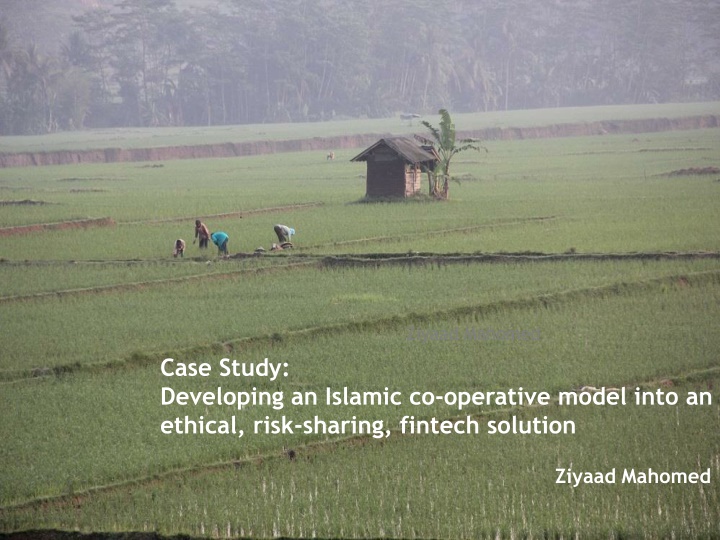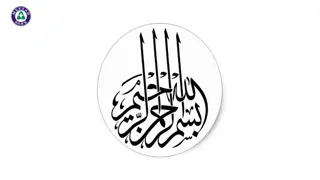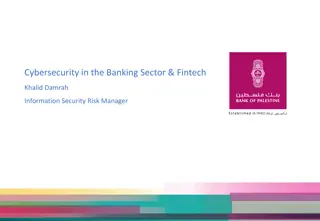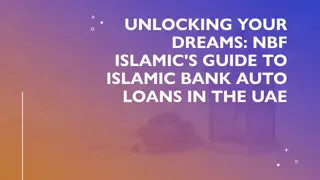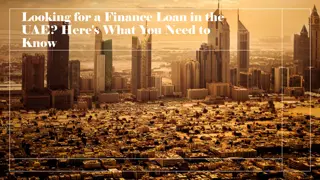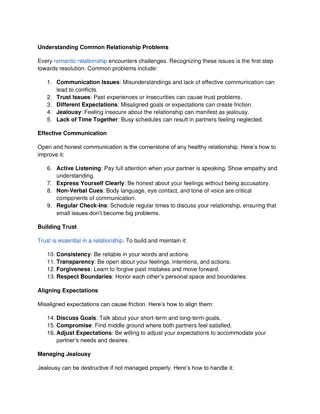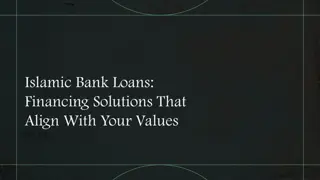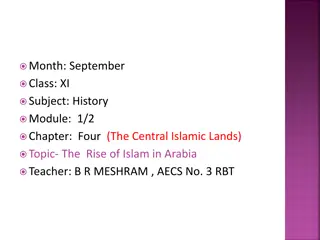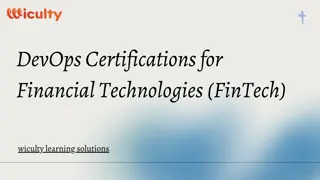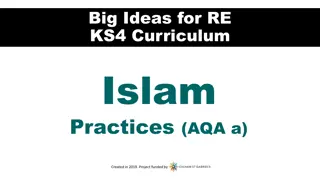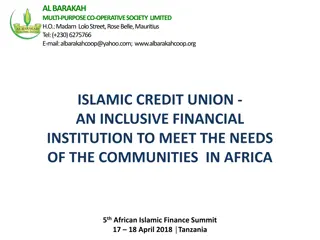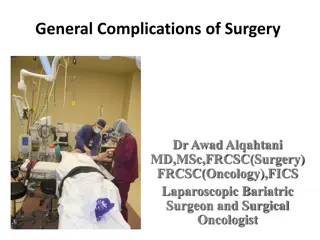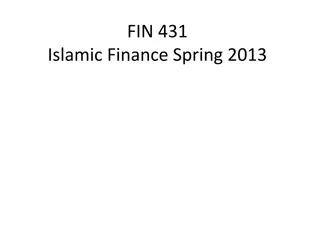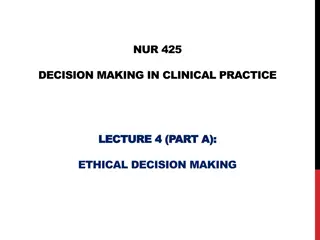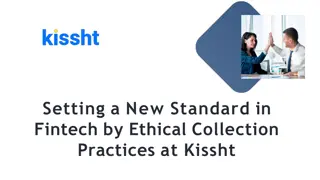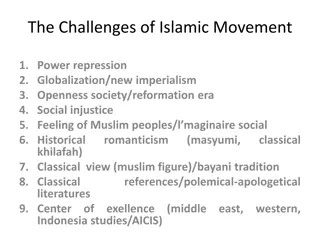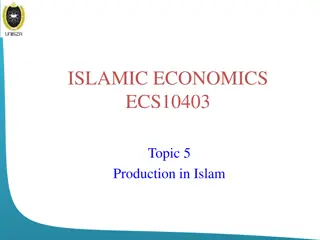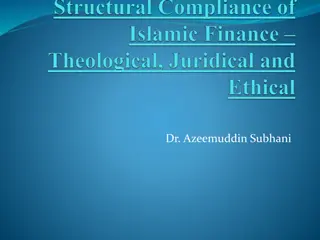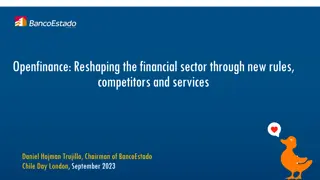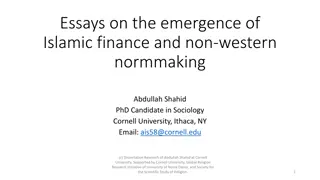Transforming Islamic Co-Operative Model into Ethical Fintech Solution
Indonesian farmer Ziyaad Mahomed's case study highlights challenges in livestock farming, rice plantations, and more due to theft, capital, and manpower issues. Market survey suggests microfinance, co-operative restructuring, waqf, and zakat solutions with emphasis on risk-sharing over debt-based Islamic microfinance for social development.
Uploaded on Sep 17, 2024 | 2 Views
Download Presentation

Please find below an Image/Link to download the presentation.
The content on the website is provided AS IS for your information and personal use only. It may not be sold, licensed, or shared on other websites without obtaining consent from the author.If you encounter any issues during the download, it is possible that the publisher has removed the file from their server.
You are allowed to download the files provided on this website for personal or commercial use, subject to the condition that they are used lawfully. All files are the property of their respective owners.
The content on the website is provided AS IS for your information and personal use only. It may not be sold, licensed, or shared on other websites without obtaining consent from the author.
E N D
Presentation Transcript
Ziyaad Mahomed Case Study: Developing an Islamic co-operative model into an ethical, risk-sharing, fintech solution Ziyaad Mahomed
Background of Case 20 years ago, a young Indonesian farmer began rearing chicken to feed his family He managed to progress to an estate that has : livestock farming (1,000 heads), rice plantations (10 acres), a lumber mill / furniture factory with acres of trees (6 acres), a coffee plantation (5 acres), and schools that educate children in agriculture and farming so that they can be the leaders of tomorrow But the farmer faced a number of challenges: Stolen animals and high mortality Insufficient labor force No capital No knowledge of Shariah-compliance Limited knowledge of modern farming methods
Challenges to be solved for the farmer and the community Cattle Manpower Loss of 50 heads of livestock a month due to theft and 10 due to illness Lack of capital for feed, supplements, etc. Halal certification issues for cattle-farming High levels of poverty in the village Rice Paddies, Coffee plantations and Lumber Mills Similar Issues of manpower, skills and capital
Literature / Market Survey A literature and industry survey revealed the following options: Microfinance Co-operative restructuring Waqf Zakat But each solution brought additional challenges
Issues in Micro-financing for co-operatives Previous studies indicate that poorer families were not the beneficiaries of micro-finance (Hulme & Mosley, 1996) Poorer families become even poorer when using micro-finance, because Lack of entrepreneurial skills, literacy, financial acumen Need for survival, thus used for consumption rather than investment, thereby entering a poverty-debt trap Peer group pressure adds significant distress and creates potential for conflict Exorbitant rates benefit the fund providers average of 35% globally (CGAP, 2015), even as high as 80% these are the reduced rates, after government/NGO subsidies Attracting HNWI & investors in search of socially uplifting investment that provides good returns Islamic micro-finance is debt-based, with no difference in impact from conventional micro-finance Number of scholars suggest risk-sharing as a better solution to social development: Chapra (1985), Mirakhor (2010), (Arrow, 1971), Coleman (1988), Fukuyama (1995) and Collier (1998)
Literature Microfinance Differences Conventional MFI Islamic MFI Governmental, Interest-based capital. Repayments to capital providers are interest-based and fixed. Externally sourced via deposits, Zakah (Obligatory Charity), Waqf(Endowments), Voluntary Charity, Collective Investments or interest-free loans. Flexible repayment. Not interest-based. 1. Source of Funds Lending with an interest rate. Asset financing modes from the Shariah, eg Murabaha, Ijara. Profit- based, not interest-based. 2. Modes of Financing A percentage deducted in the form of savings for an investment risk reserve. Savings cannot be compulsory. A percentage of revenue is diverted to the Risk Reserve or a percentage of voluntary savings. 3. Risk Reserve Ethical, behavioral and social programs. Similar programs that include the strict rulings on repayment of debt in Shariah. 4. Social Program Risk inherent since it is difficult to track the actual use of loans and possible diversion of funds. Risk mitigated since financing is asset-backed, hence use of funds more transparent. 5. Moral Hazard
Contemporary Challenges Demand Side Rise of global SRI/ESG industry that requires more socio- economic investment models Access to investment or distribution channels are being disrupted by a wave of fintech solutions Global investment increased 300% in fintech between 2013 & 2014 : $4 bil to $12 bil Fintech wealth management solutions are very new, making use of digital investment platforms and robo-advisors (using NNP & AI algorithms on p2p networks) Islamic fintech solutions are gaining ground with new products but with similar crowdfunding models How does a savvy, Islamically conscious investor get involved in a sophisticated, risk-managed project that is also graduating people from below the poverty line?
Proposed Solution Tier 1: Operational End Each project is ring-fenced. Based on individual risk-return profiles and a Net Asset Value, they operate as mini-funds with risk that is priced in Cattle MANCO enters into Musharaka with Head Farmer Provides capital, skills, risk management & market channels T R A I N I N G Villagers Head Farmer Rice MANCO Depending on their responsibilities, they are either hired or enter into Mudaraba with the MANCO Coffee Additional Projects
Tier 2: Investment End Each investment group is established based on the risk profiles determined through a series of questions (robo-advisor) The advisor will provide each investor with a choice of investments, either individual or a combination of projects, in line with the risk-return appetite Profiles of each ring-fenced project will be available on-line, with real-time web-feeds and progress Investors with qualifying investment funds will be allowed to move funds between projects based on changing risk profiles, with period-restricted or demand investment Investor Group A Investor Group B Fintech Platform Investor Group C Investors X, Y, Z
Tier 2 : Mudaraba PSR & Project risk-weightages Profit-Sharing Ratio MANCO Share 3 months 6 months 1 year Demand 40% 30% 20% 50% Investor Share 60% 70% 80% 50% Weights Assigned 0.8 0.9 1.1 1.4 Project Scoring A. Cattle 1.2 B. Rice Paddies 0.8 C. Coffee Plantation 0.7
Model Expansion Additional co-operatives with more projects have been identified to include into the program for more effective portfolio diversification Replication into an international network will allow for currency hedging possibilities, improved training techniques and skills acquisition and even more cost-effective purchase of equipment, livestock, feed, etc. Objective is also to establish an International market between the co-operatives so that they may trade in a managed setting without exploitation from MNCs and unscrupulous landowners/traders
Summary > 300,000 co-operatives operated in Indonesia in 2014 Micro-lending often exacerbates the problem of poverty, and creates a poverty-debt trap, especially for poorer families Lack of entrepreneurial skills, and an excess of micro-enterprises is also harmful for developing economies Zakat and waqf offer partial solutions Investors are in search of Shariah-based, risk-sharing solutions that can be accessed from their smartphones With active management in a 2-tier co-operative model that ring-fences projects based on risk pricing and NAV, coupled with distribution through an AI-powered investment platform molds a rural farming project into a cutting-edge investment solution that can be replicated and expanded for maximum effectiveness
